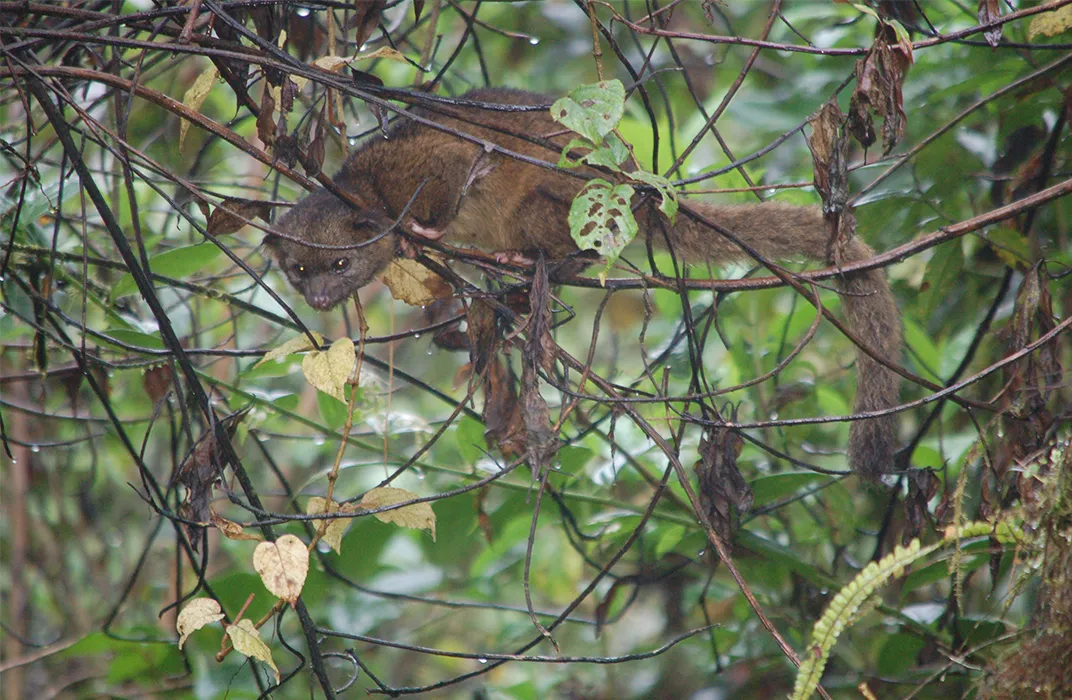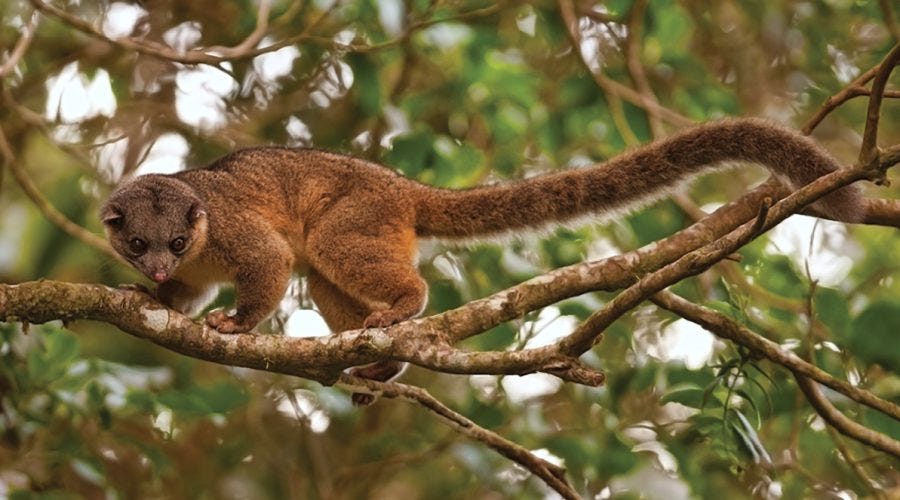Perhaps no animal is more noteworthy right now than the Olinguito (Bassaricyon neblina). This really cool little mammal has certainly captured the imagination of scientists and wildlife fans everywhere. This tiny creature was only recently discovered and is a nocturnal animal that lives in the cloud forests of the Andes Mountains. It can be found in Colombia and Ecuador. This blog then will take a closer look at the discovery of the Olinguito, its characteristics and habitat in addition to what is being done to conserve it: proving once more that this elusive animal really does deserve to be called an animal kingdom’s hidden gem
The Discovery of the Olinguito

The Olinguito discovery, was “one of the most remarkable stories in the annals of zoology,” she wrote. Although the animal had been observed by local people for generations, it was only confirmed as a new species in 2013 when Dr Kristofer Helgen of the Smithsonian Institution studied its body structure. The distinction is the result of physical exams, as well as genetic analysis that separates it from olingos, which are closely related. Since then, the find has been described in a paper published recently in Biology Letters, and is notable as the first new species of carnivorous mammal to be discovered in The Americas for 35 years.
Physical Characteristics of the Olinguito
The Olinguito is a small tree-dwelling mammal and can be easily identified by its physical characteristics. The aye-aye is also distinguished by its long, bushy tail and large goggling eyes, well adapted to a nocturnal life. [in The Mismeasure of Man] The olinguito weighs between 900 grams to 1.2 kilograms (approximately two to 2.5 pounds) and is slightly smaller than a cat — the latest addition to the raccoon family. The bushbaby is recognisable by its rounded ears and an expressive face that endears it to anyone tracking them.
Habitat and Distribution
The Olinguito lives in the cloud forests of the Andes. These fascinating creatures are to be found only in Colombia and Ecuador. The Olinguito, is well suited to this environment since these forests are perpetually shrouded in mist and often covered by clouds which contributes to the high humidity of it. This animal is mainly found in the canopy, where it is very agile. The species lives at an altitude between 1,500 to 3,000 meters above sea level. The Olinguito would have plenty of food and refuge in the dense foliage and abundant biodiversity that occur among the cloud forests.
Diet and Feeding Habits
Being mainly fruits, the Olinguito’s diet consisted largely of fruit making it a frugivore. But flocks of birds also eat insects and nectar, proving that they are omnivorous. “Olinguitos have sharp claws and spend much of their lives in the trees, so they are well adapted for an arboreal life,” Neylan says. Because the Olinguito primarily feeds on fruit, it is an important seed disperser which promotes the overall health and regeneration of its forest home.
Olinguitos are generally solitary animals, and each olinguito maintains its own territory. Nocturnal by nature, they appear in evenings and spends the night scavenging for food. Daytime refuges: Tree hollows or dense foliage. Even though Olinguitos are solitary, they still communicate by making vocalizations like chirps and whistles that also allow them to demarcate territory so as not to feel threatened by the presence of other Olinguito. and being very shy by nature and mostly active during the night, it is quite hard to study them properly in the wild.
Reproduction and Lifespan

Little is known about the Olinguito’s reproducing behavior; however it appears that its reproduction rate is relatively low. (Welch 2013). Females only produce one offspring at a time, and have the young in trees where it is safe. The young Olinguito continues to be with its mother till it can take reclaim and mark its own territory. The life of the Olinguito in captivity is at least about 20 years, but the animals in Wild don’t live to that age due to getting killed by natural enemies and have other difficulties.
Conservation Status and Threats
The Olinguito is currently classified as “Least Concern” by the International Union for Conservation of Nature (IUCN), but this does not mean it is free from threats. Habitat loss due to deforestation and agricultural expansion poses a significant risk to the animal survival. The destruction of cloud forests reduces the available habitat and food sources for these animals. Additionally, climate change may alter the delicate balance of the cloud forest ecosystem, further threatening the Olinguito’s habitat.
Conservation Efforts
Efforts to conserve the Olinguito and its habitat are crucial for the species’ long-term survival. Conservation organizations are working to protect the cloud forests of the Andes through various initiatives. These include establishing protected areas, promoting sustainable land-use practices, and engaging local communities in conservation efforts. Educating the public about the importance of preserving these unique ecosystems is also vital. By supporting these initiatives, we can help ensure that the animal and other species that share its habitat continue to thrive.
The Role of Zoos and Research Institutions

Zoos and research institutions play a significant role in the conservation of the Olinguito. By studying the species in captivity, scientists can gain valuable insights into its behavior, diet, and reproductive habits. This knowledge can inform conservation strategies in the wild. Additionally, zoos can raise awareness about the animal and the challenges it faces, inspiring visitors to support conservation efforts. Collaborative research projects between institutions in different countries can also enhance our understanding of this elusive mammal.
The Importance of Biodiversity
The discovery and study of the Olinguito highlight the importance of biodiversity. Each species, no matter how small or elusive, plays a role in maintaining the health and stability of its ecosystem. The animal role as a seed disperser helps promote forest regeneration, which benefits countless other species. Protecting biodiversity is essential not only for the survival of individual species like the animal but also for the overall health of our planet.
How You Can Help
There are several ways individuals can contribute to the conservation of the Olinguito and its habitat. Supporting conservation organizations through donations or volunteer work is one effective way. Additionally, making environmentally conscious choices, such as reducing deforestation and promoting sustainable practices, can have a positive impact. Educating others about the importance of biodiversity and the threats facing species like the animal can also make a difference. Every small action contributes to a larger effort to protect our natural world.
The Wonder of the Olinguito
In conclusion, the Olinguito is a remarkable example of the hidden wonders that our planet still holds. Its discovery has shed light on the rich biodiversity of the cloud forests and the importance of conservation efforts. By learning about and protecting the animal , we can contribute to preserving the delicate balance of its ecosystem. The animals story reminds us of the beauty and complexity of nature and our responsibility to safeguard it for future generations.




